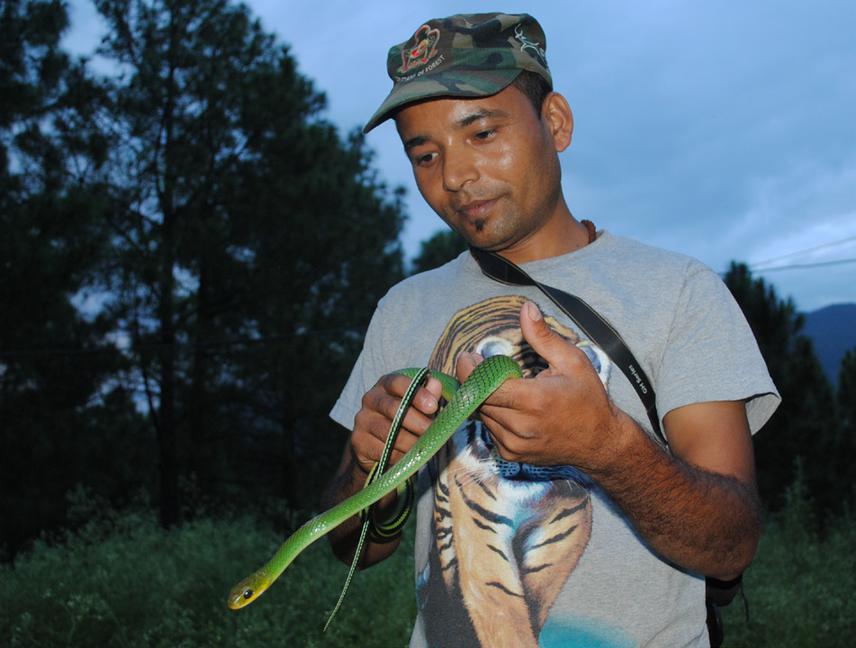Bal Krishna Koirala
Other projects
27 Aug 2019
Conservation of King Cobra (Ophiophagus hanach) and Other Medically Significant Species of Snakes in Tashigang Forest Division, Eastern Bhutan
This project is aim to assess the snake diversity, identification of medically important snakes, spatial distribution, and analyzing the human health problems associated with snake bites.

Bal with Ptyas nigromarginata.
Global Reptile Assessment had expressed serious warning in regards to recent, alarming statistics (Urbina-Cardona 2008). Worldwide, 32.5% and 22% of amphibian and reptile species, respectively, are endangered (Canavero et al. 2010), and current trends suggest even more species could become threatened in the near future. As compared to other wild animals snakes can be regarded as a highly vulnerable group in the country. This is because all snakes are considered to be poisonous and killed at sight. This is serious threat to even non-poisonous and common species like rat snakes. Such indiscriminate killings, mainly due to their fearsome reputation and superstitions, are major social factors contributing to the elimination of snakes from nature. Even these days, many people believe that snakes are cause of human health problems but till today medical data concerning snake bites are not been explored to justify whether such perception hold undeniable truth. Despite these facts, the field of herpetology has always received less priority in Bhutan. Scientific investigations concerning the herpetofauna of Bhutan have been limited, thus the information with respect to the subject matter is inadequate.
The current situation demand urgent conservation intervention through this kind of project by raising awareness among communities about the conservation importance of snakes and making them understand the herpetofauna as a key component of any natural ecosystem.
Therefore, this study will focus on obtaining baseline information on snake diversity and distribution through field survey in some of the potential areas under Sarpang district. In addition, the study also aims to assess public health problem associated snake bites through collection of information from medical institutions and conducting public awareness campaigns to address such emerging issue. The project also aimed to identify the medically important snake species, their temporal and spatial distribution to address human-snakes conflict through participatory approach for the conservation of snakes and minimise the human casualty as well.